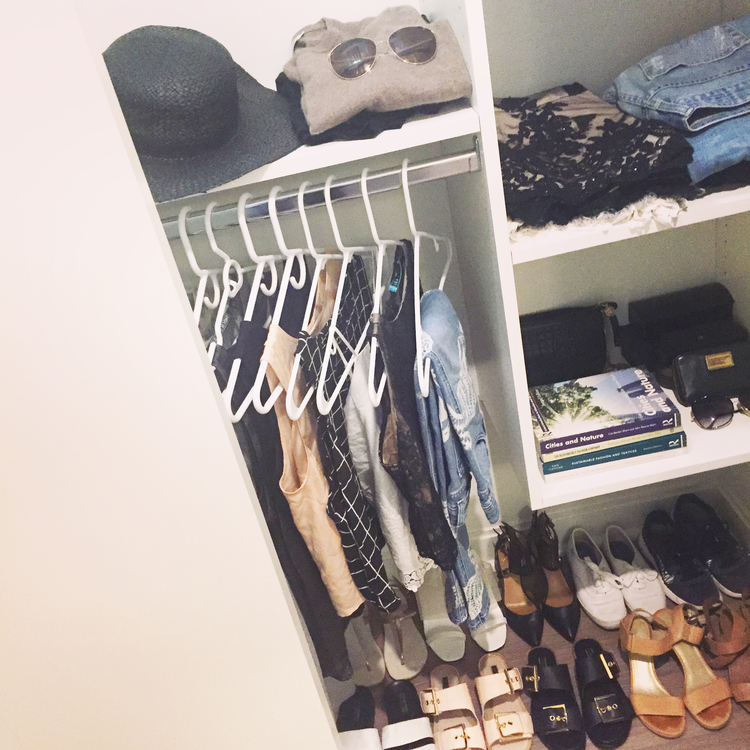- A version of this article was first published on Kamea World.
 I’ve been traveling and moving around a lot lately while working on my book, Thrive, an environmentally conscious, evidence-based guide to healthy living. I can hardly call this “work” though, despite endless hours of researching, speaking with experts, writing, and reading stacks of textbooks and online (deep but dry) scientific articles. I have to admit that it’s been quite a life-changing and exciting journey, as I just keep learning more and more every day! I am such a nerd, but I really believe that knowledge can be so empowering. I have never been this excited about something in my life, and I cannot wait to share my discoveries with you when I officially launch my book next spring!
I’ve been traveling and moving around a lot lately while working on my book, Thrive, an environmentally conscious, evidence-based guide to healthy living. I can hardly call this “work” though, despite endless hours of researching, speaking with experts, writing, and reading stacks of textbooks and online (deep but dry) scientific articles. I have to admit that it’s been quite a life-changing and exciting journey, as I just keep learning more and more every day! I am such a nerd, but I really believe that knowledge can be so empowering. I have never been this excited about something in my life, and I cannot wait to share my discoveries with you when I officially launch my book next spring!
Meanwhile, however, traveling and nomading isn’t always that pretty and romantic…
Especially when it comes to packing and needing to basically live out of just a suitcase-worth of things. This forced me to downsize, curate an easily portable wardrobe, and think twice before buying anything new. The result of this is my minimalist wardrobe shown in the picture above, which I am extremely happy about. Actually, needing to downsize has turned out to be such a positive change in my life. I never lose anything anymore and I can probably tell you off the top of my head where everything I own is. Also, most items in my wardrobe match with one another, so I end up spending less time putting together outfits in the mornings or digging for things, and more quality time with friends and family or being productive. This leads to…
A simplified wardrobe = a simplified life = higher quality living
Here’s a summary of what I’ve learned as a nomading eco-fashionista on how to curate a sustainable minimalist wardrobe:
1. Determine your personal color palette.
Take a look at your current wardrobe and see which colors dominate. Monochromes? Neutrals? Earthy tones? Bright neons? Floral colors? This is your personal color palette. While most of your clothing should be within that one color palette, it’s okay to have a few pieces that stand out. Having a single personal color palette is important because it will help ensure that most of your pieces match effortlessly!
2. Include a solid chunk of basics
Basics are for everyone, for (almost) every occasion! Dress up with heels or dress down with sneakers. They pair well with other basics, but they also pair well with more eye-catching pieces and accessories. A white tank will match with a variety of bottoms ranging from denim shorts, red jeans, to floral maxi’s. Throw on simple studs or wear a pair of dramatic chandeliers. They are so versatile and will never be “out of fashion.” Investing in high quality basics is really a great sustainable minimalist wardrobe decision.
3. Downsize your wardrobe
Other than including pieces within your personal color palette, a solid chunk of basics, and some other of your miscellaneous favorites, take everything else out. Minimalism means cutting down and simplifying. Think about what you truly need, and seriously throw everything else out. By throwing out, however, I mean properly recycling non-biodegradable clothing (including most synthetic fabrics such as polyester, nylon, etc), donating them, re-selling them, or giving them to your friends.
4. Buy less but buy better
Think twice about what you want. Avoid impulse-purchases. Let it sit overnight. If you can’t stop thinking about it after a few days, maybe you do really want it. Think about whether it is within your color palette and will already match with your other existing pieces, or if it will require you to buy more new clothing just to match this one. Think about whether you would still want to wear this in a few months or in a year, or if it is just “in” now and will end up forever sitting in the corner of your closet after a month. Think about whether it is high quality and durable, or if it might rip in three washes and you would have to throw it out.
Buying higher quality may come with a higher price tag, but if you’re buying less and buying better instead, these high quality and classic pieces may just last you a life time!
5. Choose clothing made with sustainable and natural fabrics
Developing a sustainable minimalist wardrobe requires you knowing what fabric types are most eco-friendly and natural. If you are buying something new, avoid virgin synthetic non-biodegradable fabrics such as virgin nylon and polyester (read more about polyester here), and choose recycled synthetics like recycled polyester (rPET) instead. This also means avoiding problematic natural fabrics such as conventional cotton (super pesticides-intensive and drains your fresh water sources), and buying organic or recycled cotton, hemp, and linen instead. Of course, there are also other eco-friendlier options you can look out for.
P.S., If you are interested in more evidence-based tips on responsible fashion (and eco-conscious and healthy living in general), stay posted for my upcoming book launching in 2016!
How do you strive for a sustainable wardrobe?
Also see: The Beginner’s Guide to Minimalism
How to Find Your Signature Style
__
Photo: Kamea Chang




